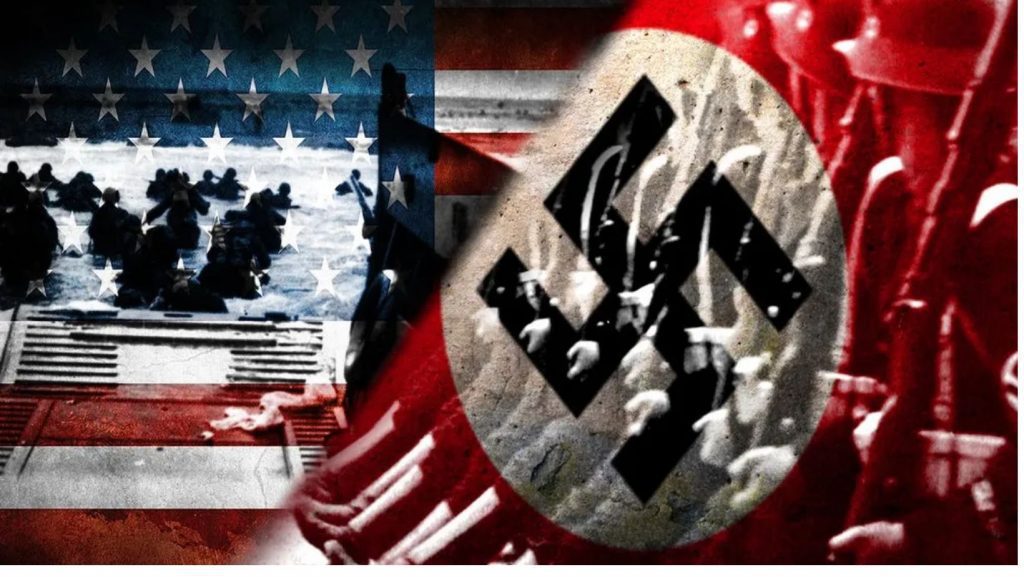Evolution Of Iron Forging Due The Industrial Revolution And World War II
Written by an anonymous hero
Is It Possible That In Order To Create Something, Something Else Must Be Lost First?
Abstract:
Iron forging has a long history dating back thousands of years. However, two significant events of the modern era had a profound impact on the development of iron forging: the Industrial Revolution and World War II. With the advent of the invention of the steam engine, processes were industrialized and, among these, forging changed from manual to mechanized work. New social classes and fights for territory and indemnities arose due to geopolitical conflicts. The Second World War is fought and with it, new changes and technological advances to enhance the process of manufacturing materials in series. The forge is used as one of the manufacturing processes of armaments, vehicles, among others. At the end of the war, the reconstruction of the world began using manufacturing production processes, including forging. In this article, we will analyze how these events influenced the evolution of iron forging for the production of products that we use today.
Introduction
From the workshop to the factory:
Until the 18th century manufactures were made in small workshops where work was done manually with the use of simple tools. In the middle of the 18th century, various machines were invented and factories were built that gradually replaced the small workshops. The first machines worked with hydraulic energy, but soon a new source of energy appeared: steam. And it was James Watt who patented the first steam engine. Thanks to this, productivity multiplied considerably, lowering costs and flooding the international market. The iron and steel industry needed to produce iron for the manufacture of these machines and the invention of blast furnaces was necessary. This made it possible to obtain quality iron that was later used to manufacture machines and tools through large-scale forging processes.
The Industrial Revolution brought with it negative consequences since the birth of new social classes generated revolts, resistance and conflicts over territory to obtain wealth from other places and initiated conflicts that ended up involving other countries, leading them to war. However, these movements seem necessary for the impulse of new strategies and optimizations for productivity and development, then technological innovation proposals for mass production are generated. Could it be that these events of social unrest and discontent ended up being necessary for the development of productivity? Is it possible that the most inhumane acts in history were necessary for further development? This article aims to delve into the evolution of the forging process due to these two events that marked history.
The Industrial Revolution Changes the world
The Industrial Revolution, which began at the end of the 18th century in Great Britain, led to a significant increase in the demand for iron products. This was made possible by the development of new manufacturing techniques, including the Bessemer process, developed in 1855, which made the production of large quantities of high-quality iron easier and cheaper. Mass production took place in factories and tools were developed such as the steam hammer and the mechanical hammer, which revolutionized the forging process. These machines allowed the production of larger and more complex iron parts, which would later be used for the construction of bridges, buildings and railroads, driven by the need for greater efficiency and performance.
Without forgetting the advent of James Watt’s steam engine, industry was completely revolutionized.

Manufacturing Market Expansion of Iron Forging
The expansion of the manufacturing market in the steel sector led to the modernization and construction of large buildings around the world, where forging processes were closely involved. The United States is one of the great benefactors of this movement and adopted the English way of working and machinery, modernizing its cities.
The United States, has an important growth in architecture and construction in cities such as Chicago and New York. In 1871, after the great fire, the city of Chicago implements the technologies born of the ashes, for the productive processes, where wood constructions were replaced by steel and the forging process appeared once again and had incredible influency in the construction of the city. An architecture never seen before was born, where world famous architects practiced the designs of the first skyscrapers in history.

Birth of Iconic Buildings Thank To Iron Forging

The birth of iconic buildings such as the Home Insurance Builing, (1884-85), and Rookery Building (1885-88) with its beautiful wrought iron staircases Chicago and iron railings took place in the city. The design of these buildings was innovative because it incorporated steel into its internal metal structure, traditionally composed of wrought iron. This set a trend in the construction of stores and homes with wrought iron products. The availability of new design tools and software allowed iron forging companies to create intricate and unique designs for their clients. Chicago custom wrought iron balcony railing became a hallmark of the city’s architecture, as the ornate wrought iron balconies added a touch of elegance and grandeur to many buildings.
Wrought iron railing and indoor stair railing also underwent significant changes, with new design trends emerging for both interior and exterior settings. Metal balcony design and iron railing designs exterior saw a surge in popularity, as homeowners and architects sought to create a modern and sleek aesthetic with their iron railings.
In spite of provoking a technological advance for production, new social classes arose from this movement, where the peasants became the proletariat of the bourgeoisie, who became richer through the possession of factories and land. This caused a commotion and sociopolitical conflicts began, where the most ambitious characters in history claimed and seized land and brought as a consequence the resistance organizations. During the following years, the wars and fights for territory began. The last historical military event of great impact in the world was the arrival of the World War II.
The Begining of World War II

The World War II was born as a consequence of the Treaty of Versalle, where the powers of the World War I (1914-1918), had forced to sign an agreement that implied high indemnifications and loss of territory to some countries. Germany was one of the most affected countries and was dissatisfied with this treaty.
On the other hand, in 1929 a crisis broke out in the United States, known as the Great Depression, which caused strong damages all over Europe, affecting notably Germany, which gave rise to the German National Socialist Labor Party led by Adolf Hitler. There were among all this, strong ideological differences between the different leaders of the powers. And on September 1st in 1939, Germany invaded Poland, two days later France and the United Kingdom declared war on Germany. And so, the World War II began.
Events of World War II
The events of World War II can be summarized in 3 major periods:
- First period (1939-1941): Called the Lightning War; Germany invaded Denmark, Norway, Belgium and the Netherlands, Luxembourg and France. And Mussolini, leader of Italy in alliance with Hitler, invaded African territories and occupied Greece.
- Second Period (1941-1943): Known as the Total War, the United States and the United Kingdom carried out an oil embargo against Japan, so Japan bombed Pearl Harbor (the most important U.S. fleet in the Pacific). And the US declares war on Japan.
- Third period (1943-1945): The United States and the Soviet Union joined the Allied side. During this period the Battle of Midway takes place where the United States completely destroys the Japanese fleets. The Soviet Union confronted Germany in the most violent battle in history and emerged victorious. Mussolini is deposed and imprisoned, and then shot. Allied troops liberate Paris, Holland and Belgium before surrounding Berlin. Hitler commits suicide in his bunker when cornered before Germany signs its surrender. Japan refused to surrender, and the United States made the decision to use atomic bombs against Japan in Hiroshima and Nagasaki. Japan then signed its surrender.
Once the war was over, the world was a different place, opening a new chapter in history.


World War II and Iron Forgin Process
World War II also had a significant impact on the development of iron forging. During the war there was a massive demand for weapons and machinery, which put the iron industry to the test. To meet the growing demand, forging techniques had to evolve again, optimizing their production processes. The production of weapons and battle equipment that were more resistant took on great importance, which led to the birth of press forging that allowed a more precise and consistent shape to be given to the metal. In addition, the use of automation and robotics in forging became more common, as the need for mass production increased.
World Reconstruction
For the reconstruction of the world many families had to emigrate in search of new opportunities. The arrival of new immigrants to the United States brings with it a greater demand for resources and new social classes. And that implies new constructions to house more people.
The forging process is no longer used to manufacture tanks and military aramament, and ornaments are built for decoration and protection of properties, the focus now is security and privacy, and the manufacture of commercial wrought iron fences, iron railing installation, wrought iron staircases and even fire escape installation, maintaining a decorative ornamental style of mass production.
In times of peace, what was once used to destroy is now used to protect, and I end this article with this question for you reader: Do you think that if wars did not exist, we would have the same technological advances? Is it possible that destruction and conflict are necessary for our evolution as humanity? Is it possible that there is a universal principle that in order to create something of equal value it must be lost? I would love to read your opinion



Conclusions
The influence of the Industrial Revolution and World War II on the evolution of iron forging is evident. These periods saw rapid advances in technology and materials, as well as changes in the social and economic landscape, which drove innovation in the forging process. Today, iron forging remains an important part of modern manufacturing, with traditional techniques such as blacksmithing and hammer forging still in use along with automated forging processes. However, the legacy of the Industrial Revolution and World War II continues to be felt in the forging industry, as its influence on the process and materials used is still evident.
References
- https://www.youtube.com/watch?v=tRiZ1pUWwrg
- https://humanidades.com/revolucion-industrial/
- https://en.wikipedia.org/wiki/Bessemer_process#:~:text=The%20Bessemer%20process%20was%20the,blown%20through%20the%20molten%20iron.
- https://es.wikipedia.org/wiki/Batalla_de_Midway
- https://es.wikipedia.org/wiki/Posguerra_de_la_Segunda_Guerra_Mundial#:~:text=La%20posguerra%20de%20la%20Segunda,UU.).
- https://es.wikipedia.org/wiki/Arquitectura_de_Chicago
- https://blog.structuralia.com/home-insurance-building-la-historia-del-primer-rascacielos
- https://es.wikipedia.org/wiki/Gran_incendio_de_Chicago




